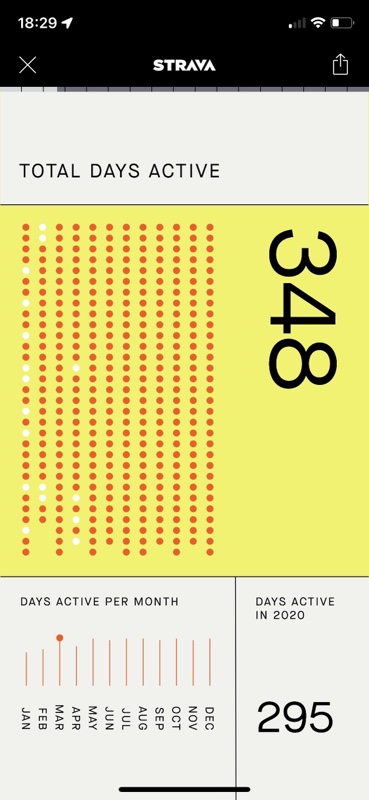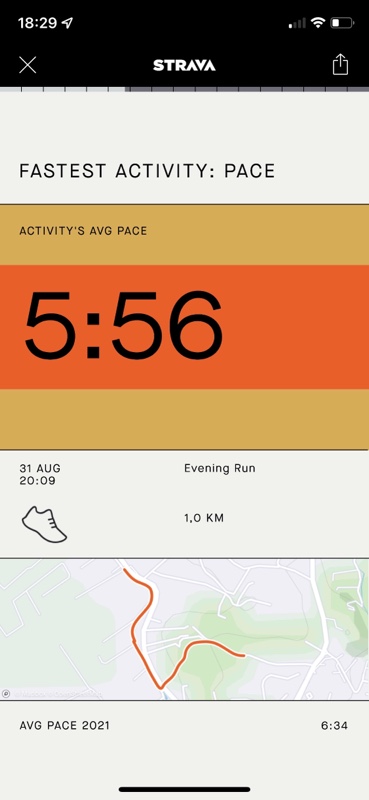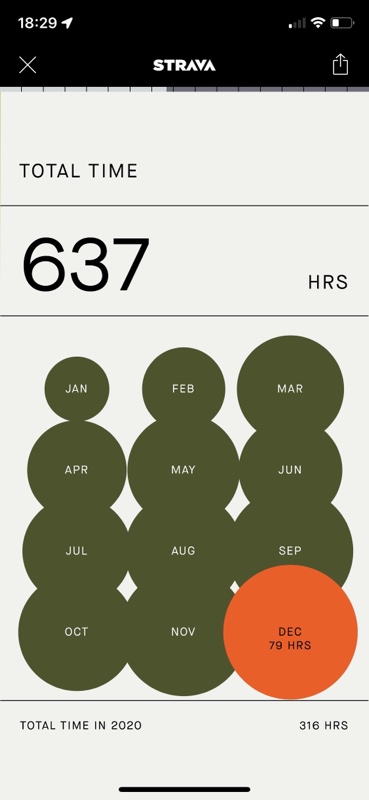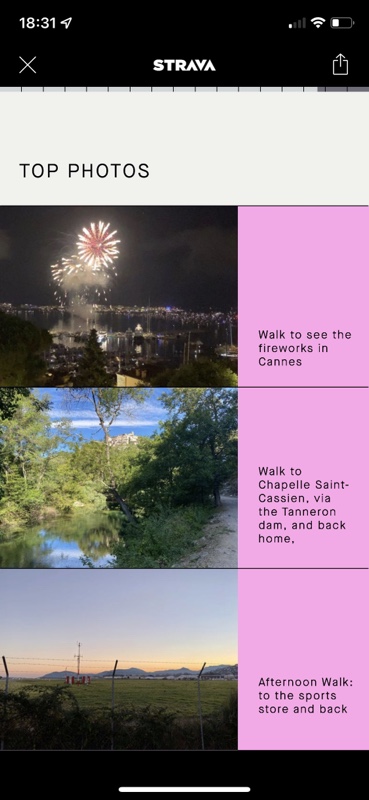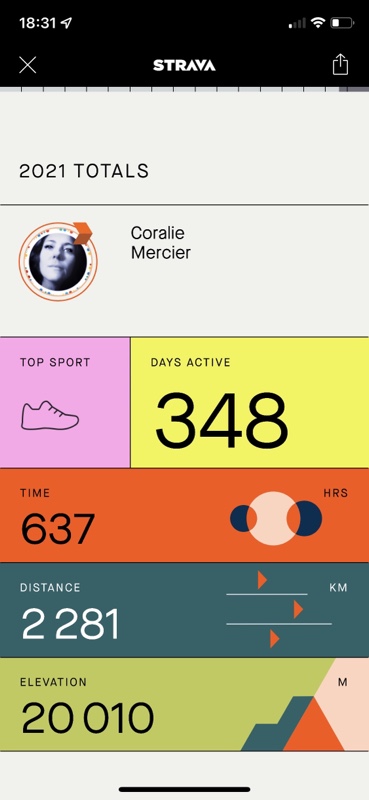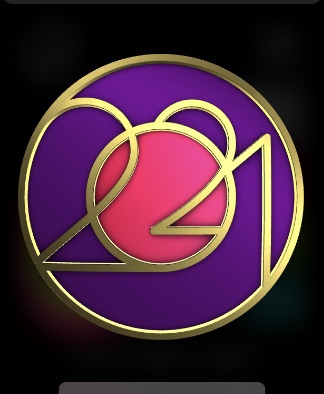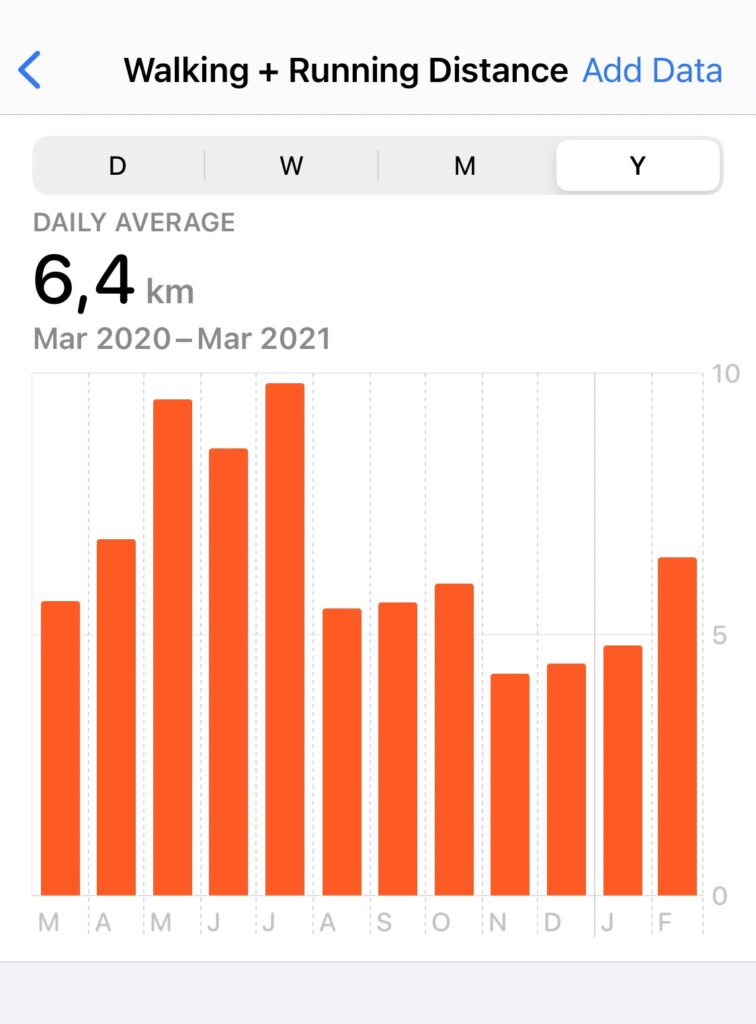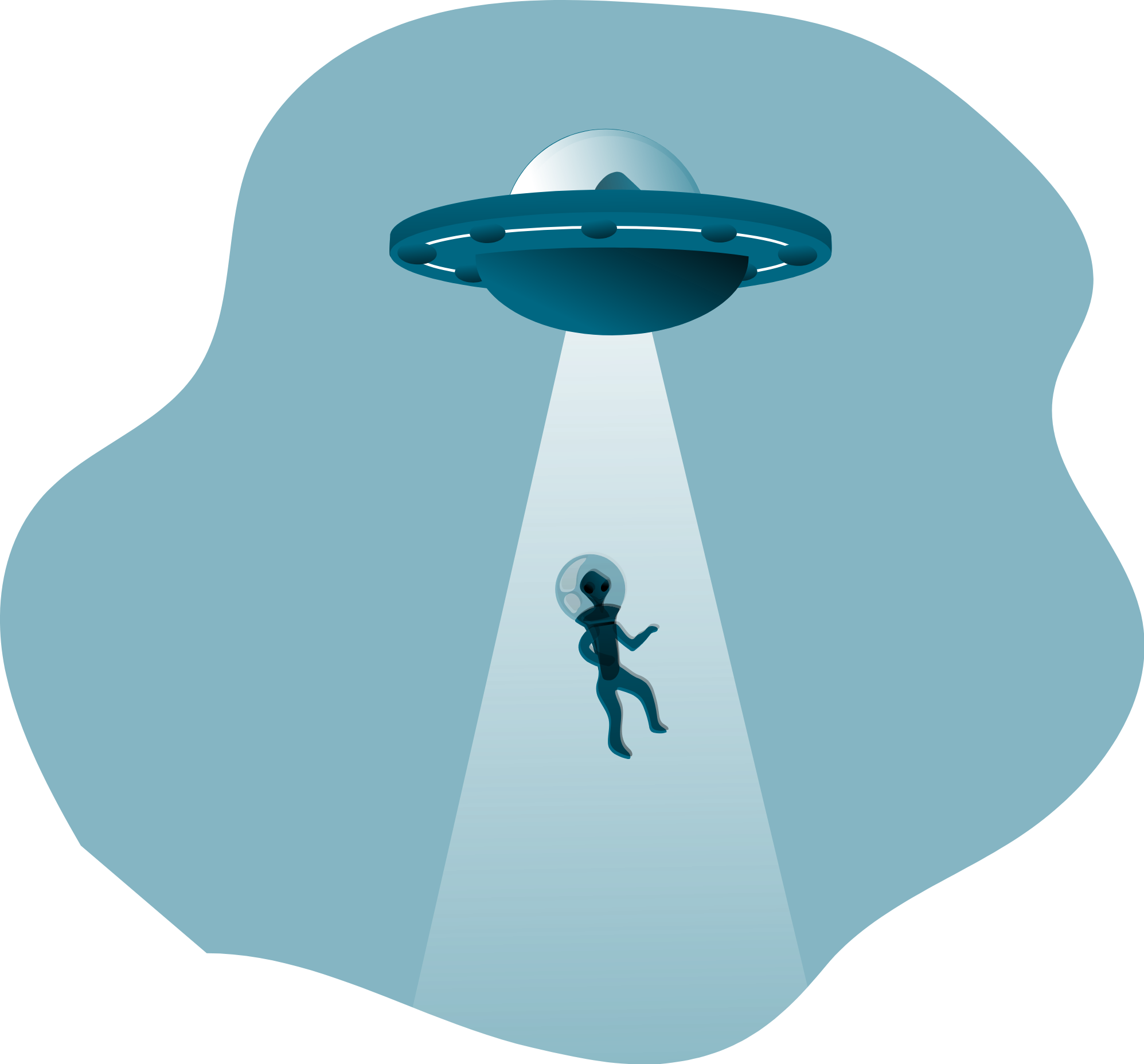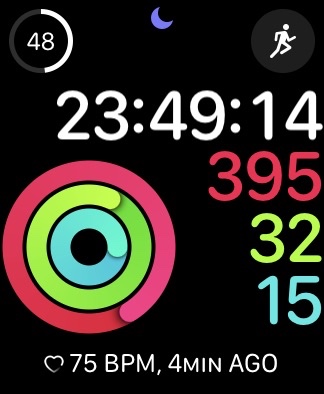When I last wrote about exercising I found the totals quite unbelievable. I look back at those today with a smile, because the ones I now have 9 months later are even more unbelievable. So I’ll check back here in a year to see how relative this all is.
My Apple Watch is my coach
This wearable wonder of computing makes it very easy to stay on top of sports. The reminders can be annoying but useful and I noticed that I got those only when I slacked (hint, hint), which does not happen frequently. That’s how driven I am.
Monthly challenges
In 2021 I earned each of the monthly challenges, which are determined based on recent past progress and are meant to either keep you at the same level or elevate you a bit, so that at the end of the year you have improved. I wonder how big they can be after a while.
- 10x double move goal
- 180.9 km (6.5/d)
- 17x double move goal
- 30x close all rings
- 19x double move goals
- 349.5 km (11.7/d)
- 3695 minutes (120/d)
- 26700 kcal (861/d)
- 4220 minutes (140/d)
- 318.4 km (10.2/d)
- 27500 kcal (917/d)
- 4770 minutes (153/d)
Apparently there is a point after which every challenge rotates between kil(ometers), min(utes) and (k)cal.
In 2020 I earned all monthly challenges but one, which I decided not to go for (24100 kcal, or 717/d) because I knew I could not earn it even if it was the month of August.
The January 2022 challenge is to walk or run 366.7 km (11.8/d). I’m not particularly up for it but I want to do it anyway. I miss the easy challenges though.
New gear

I now rotate between 7 pairs of running shoes. I have also invested in some proper running outfits for chilly weather. It is to note that all of the sweaters I got were from the Men’s section. Not out of peculiarity but really because the colours are less flashy and the sizes fit me better because I have long arms.
My sidekick: Gizmo
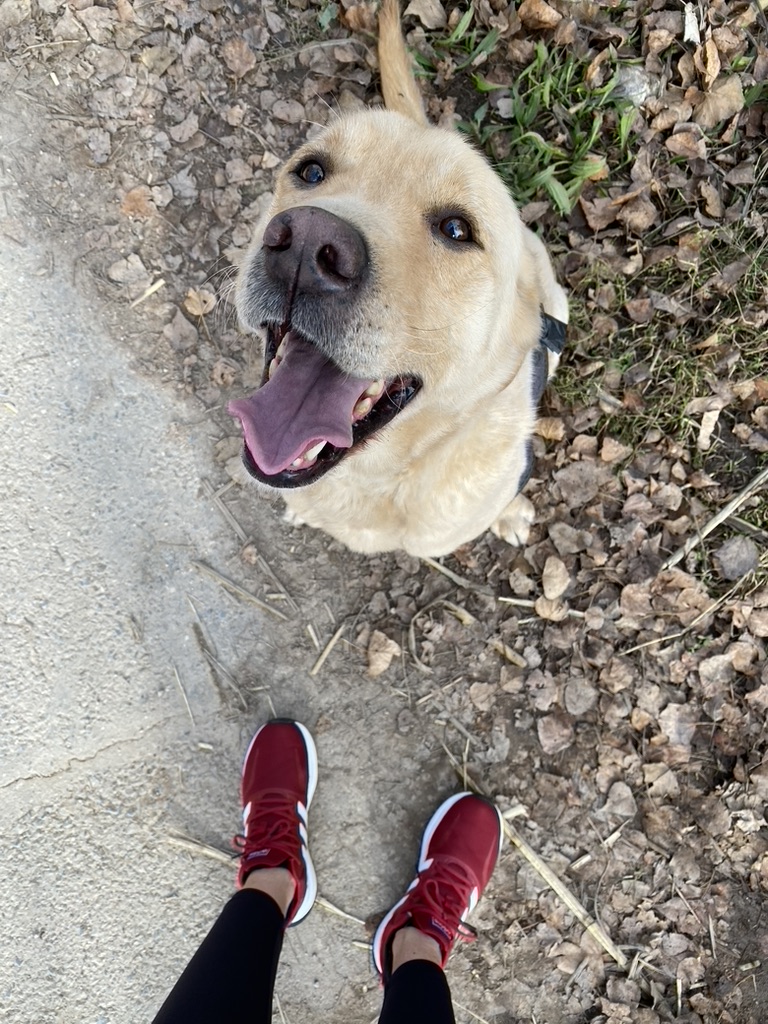
Gizmo is now 8 years old. He happily prances along and I’m very glad he’s with me. We both get our share of daily exercise, fresh air and adventures, and it gives me greater security to be accompanied by a muscular yellow Labrador. When it’s not too cold and we are next to a river he gets to swim too (but not in the sea because the sound of the ebb and flow scares him.)
Long gone are the days when he would lag at the end of the leash after running only 3 or 4 kilometers. We now go for 5K jogs once a week or twice, come back walking, and it’s perfectly fine. Or we just walk. Sometimes for two to three hours on the weekends, and on average for an hour and a half everyday.
Graphs
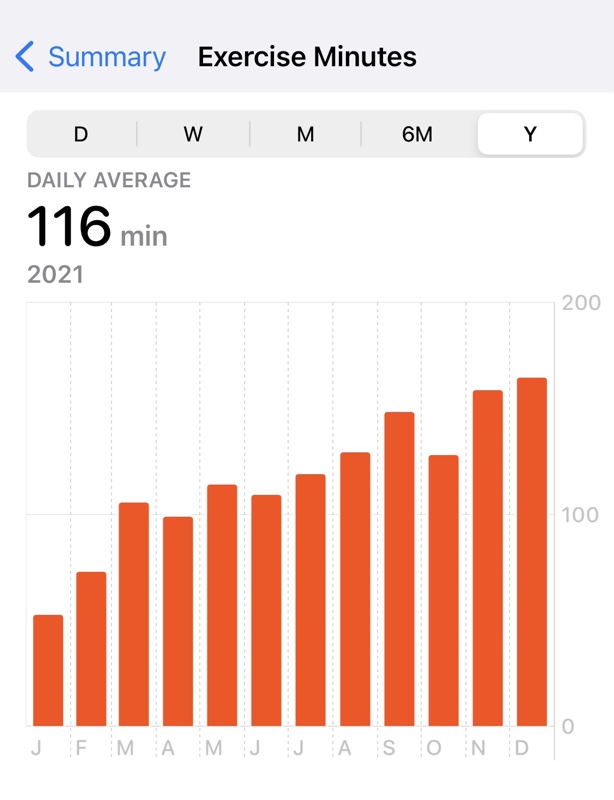
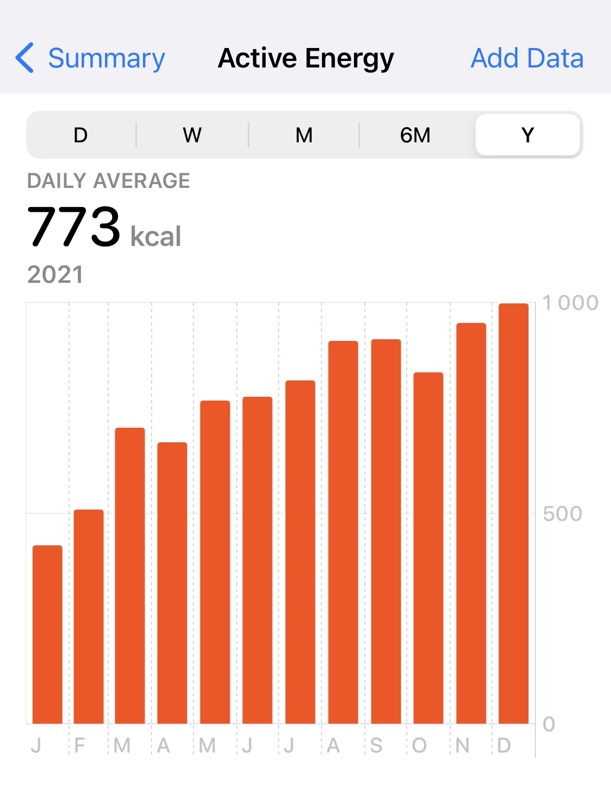


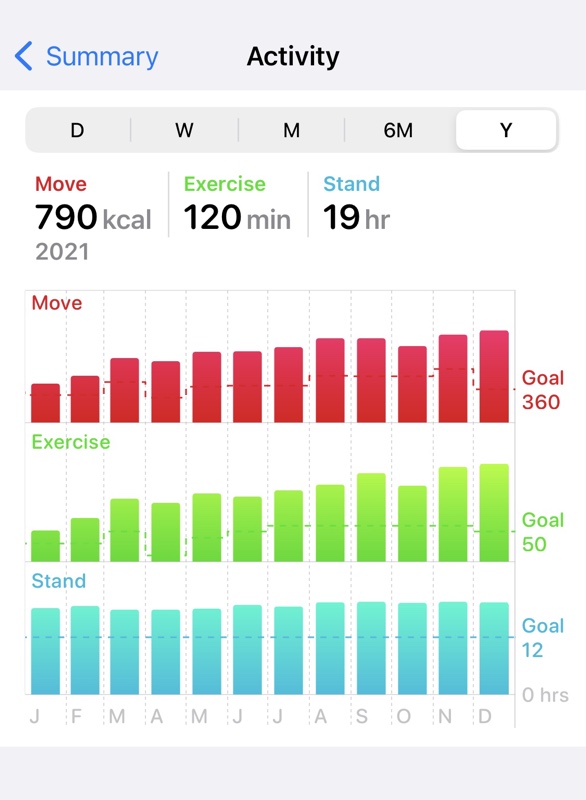

Notes on the graphs
According to those tallies (generated by the excellent and free Fitness Stats iPhone app), my 2021 in sport can be broken down as follows:
- 711 hours of exercise (= 29.6 days, so a twelfth of the year)
- 3746 kilometers walked/run (whereas I drove a bit over 5000 km with my car)
- … of which I ran 226 (average of 4K every week)
- 103 hours on the elliptical (this is equivalent to watching 123 typical TV series episodes, and guess what: that’s exactly what I did while on the elliptical)
- 650 workouts (on average I did almost two different activities everyday)
From an addiction to another
2021 is when I stopped smoking. I made up my mind in January or February and my strategy was to ramp up exercising, pick up an electronic cigarette, gauge if that was going to work, and carry on with the routine without smoking. That happened in May. I have not smoked since then. Woohoo!
But ramping up exercising meant that I burned more calories and therefore needed to up my food intake. Stopping smoking made me more hungry too, so I had two reasons to eat bigger portions.
I remember starting to eat as much and then a little more than my teenage boy! (Who abandoned basketball during the first year of the pandemic, and now more or less refuses to walk or hike with me even every now and then.)
I gained a lot of muscles apparently
I was a bit dismayed when I saw my weight ramp up slowly but very very steadily. It has now stabilized after 8 months or so, sometime in September.
However, my clothes continue to fit me so that means that I lost fat and gained (6 kilos of) muscles.
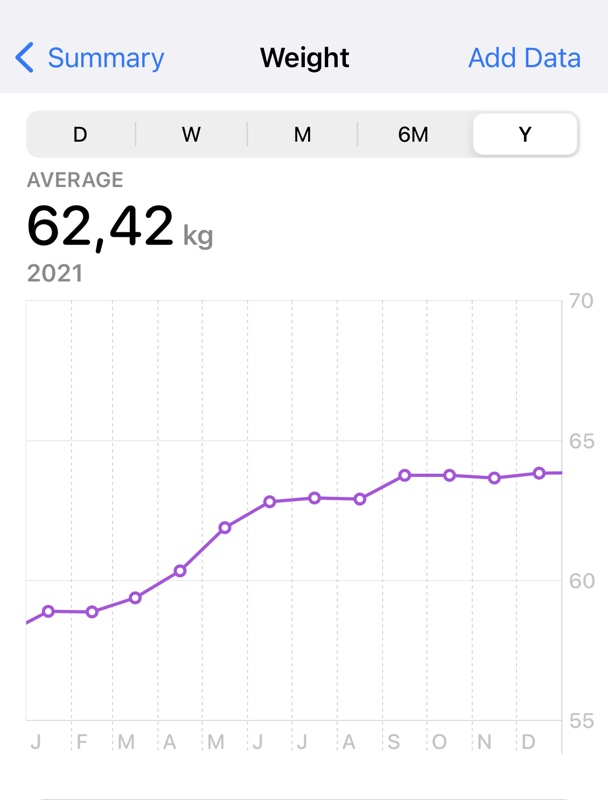
Strava’s year in sport
One of the perks of being a paying subscriber of the sports tracking app Strava is the yearly report. See below.
Aside: I used to complain a lot about how that app was geared towards triathletes only. They fixed almost all the things I complained about and now it celebrates and motivates every kind of athletes, not just those who cycle, run and swim.

